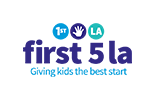What is the study about?
This study will gather information on Welcome Baby (WB), a light-touch home visiting program for prenatal and postpartum mothers and their newborn children, in order to understand virtual implementation of the WB model and the virtual home visit experience. The study will contribute to the larger body of research that documents the effectiveness of home visiting programs. Research evidence is needed to inform our understanding of the benefits of virtual home visiting and also to inform sustainability of the WB program. The study will focus on two goals: understanding the implementation of WB virtual visits and examining outcomes of WB virtual visits.
How will the study be conducted?
Understanding the implementation of WB virtual visits
To understand the implementation of the Welcome Baby virtual visits, the study explores the experiences of Welcome Baby participants and staff to identify successes, challenges, and areas where additional supports may be needed. The implementation study component includes gathering data through focus groups and case studies with mothers and interviews with Welcome Baby program staff, as well as using data already collected from the Stronger Family Database and data collected by Los Angeles Best Babies Network (LABBN) as part of quality improvement efforts.
Examining outcomes of WB virtual visits
To understand outcomes for mothers and babies receiving WB, the study aims to examine the following:
- What are the maternal and child outcomes for WB clients receiving virtual visits?
-
How do outcomes for WB clients compare with outcomes for other similar women in the community?
-
How and to what extent is level of participation in the WB program correlated with outcomes?
-
- How do maternal and child outcomes for WB clients vary by maternal characteristics?
-
How does the relationship between participation level and outcomes for WB clients vary by maternal risk level?
-
How does the relationship between participation level and outcomes for WB clients vary by demographic characteristics (e.g., ethnicity, age, education level)?
-
How do outcomes for WB clients who enroll prenatally differ from those of clients who enroll postpartum?
-
The outcomes data collection includes a longitudinal survey conducted at three timepoints with moms participating in the WB program. The study will also draw on other existing data sources, including data from a survey of other similar women from the community. This will enable us to examine outcomes for WB moms and compare them with outcomes for moms not receiving Welcome Baby.
The outcomes we are examining through this study include:
- Breastfeeding
- Maternal health
- Child safety
- Child health
- Home environment
- Birth spacing
- Maternal depression
- Parenting stress
- Social support
- Parent-child interaction
- Use of referrals
- Child language development
- Child social-emotional development, including attachment
- Child access to interventions
Why is the study important?
The findings from this study may inform future funding decisions for the program. In addition to informing program improvement, findings will add to the body of research needed to help key stakeholders better understand the benefits of participation in home visiting programs and support sustainability of the Welcome Baby program. Welcome Baby can potentially serve as a national model for a universal, light-touch home visiting program and encourage other cities and localities to implement a similar program.




